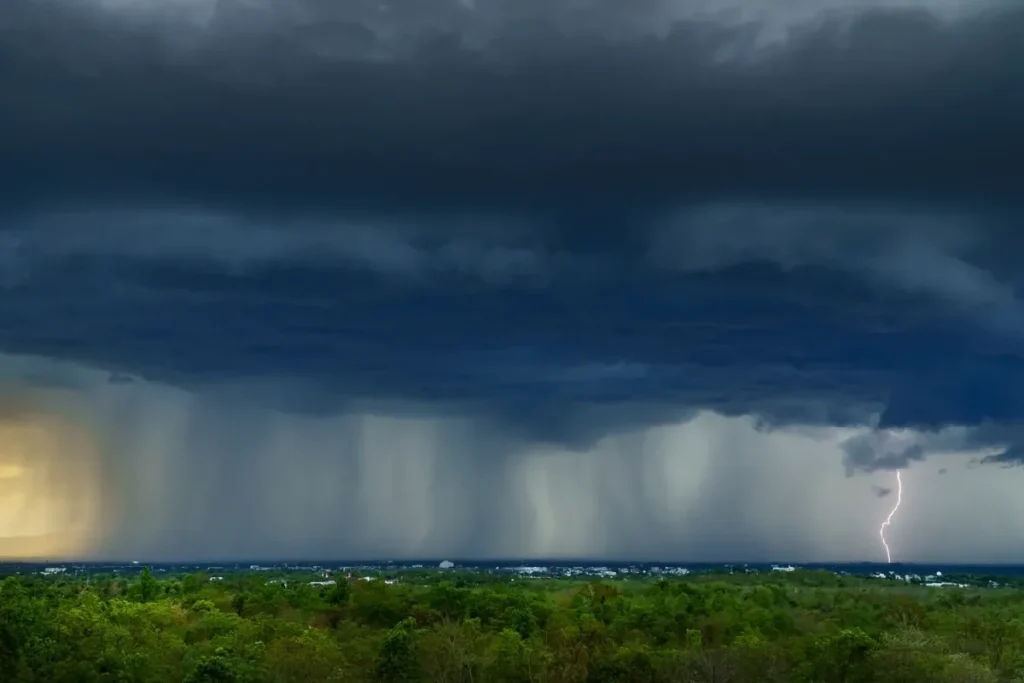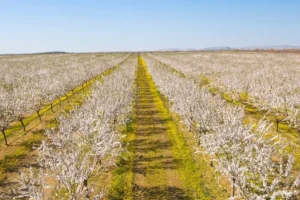Introduction
In recent decades, the United States has experienced a noticeable increase in the frequency and intensity of storms and flooding events. These trends have profound implications for communities, economies, and ecosystems across the nation. From hurricanes battering coastal regions to flash floods inundating urban areas, the impacts of these severe weather events are both immediate and long-lasting. This blog explores the patterns, causes, and consequences of storm and flooding trends in the United States, providing insights into how we can better understand and respond to these challenges.
Increasing Frequency and Intensity of Storms
Hurricanes
Hurricanes have become more frequent and intense, causing widespread devastation across various regions of the United States. The National Oceanic and Atmospheric Administration (NOAA) has recorded an increase in both the number and intensity of hurricanes over the past few decades. Several factors contribute to this trend, primarily driven by climate change.
Warmer Ocean Temperatures
One of the primary drivers of more intense hurricanes is the warming of ocean waters. Warmer ocean temperatures provide more energy for storm development and intensification. The Atlantic hurricane seasons of recent years have seen record numbers of storms and unprecedented storm strengths. For example, the 2020 Atlantic hurricane season set a record with 30 named storms, surpassing the previous record of 28 storms set in 2005.
Higher Sea Levels
Rising sea levels, another consequence of global warming, exacerbate storm surge impacts. Storm surge is the abnormal rise in seawater level during a storm, measured as the height of the water above the normal predicted astronomical tide. Higher sea levels mean that storm surges can reach further inland, causing more severe coastal flooding and erosion.
Notable Hurricanes
Hurricane Harvey (2017): Hurricane Harvey caused catastrophic flooding in the Houston area, with rainfall exceeding 60 inches in some locations, leading to over $125 billion in damages. The storm’s slow movement and prolonged rainfall were unprecedented and resulted in one of the most significant flooding events in U.S. history.
Hurricane Maria (2017): Hurricane Maria devastated Puerto Rico, causing widespread destruction and a prolonged humanitarian crisis. The storm resulted in nearly 3,000 fatalities and left much of the island without power for months.
Hurricane Ida (2021): Hurricane Ida made landfall in Louisiana as a Category 4 hurricane, bringing catastrophic flooding to the Northeast. The remnants of Ida caused historic flooding in New York and New Jersey, highlighting the far-reaching impacts of powerful hurricanes.
Tornadoes
Tornado Alley Shifts and Increased Tornado Clusters
Tornado Alley, traditionally located in the Great Plains, has seen a shift in tornado activity eastward to states like Tennessee, Kentucky, and the Carolinas. This shift is attributed to changing climate patterns and atmospheric conditions conducive to tornado formation. Recent years have also seen an increase in tornado clusters, where multiple tornadoes occur from a single storm system. This phenomenon leads to more widespread damage and challenges for emergency response teams.
Historic Flooding Events
Flooding events have become more frequent and severe, impacting both urban and rural areas across the United States. Flooding can result from a range of factors, including heavy rainfall, snowmelt, storm surges, and inadequate drainage systems. Urban areas are particularly vulnerable to flooding due to their dense infrastructure and often inadequate drainage systems. The increase in impermeable surfaces, such as roads and buildings, reduces the land’s natural ability to absorb water, leading to higher stormwater runoff and increased flood risk, like flash floods.
Causes of Increasing Storms and Flooding
Several factors contribute to the increasing frequency and severity of storms and flooding in the United States. Understanding these causes is crucial for developing effective mitigation and adaptation strategies.
Climate Change
Rising global temperatures and extreme weather patterns are symptoms of climate change. Warmer air can hold more moisture, leading to heavier rainfall during storm events. Additionally, changes in atmospheric circulation patterns can result in prolonged periods of heavy rainfall, heatwaves, and droughts.
Urbanization
Urban development replaces natural landscapes with impermeable surfaces, reducing natural water absorption and increasing runoff. This leads to higher flood risk in urban areas, especially during heavy rainfall events.
Land Use Changes
Deforestation and agricultural practices play a role in flooding. Removing trees and vegetation reduces the land’s ability to absorb water, leading to increased runoff and flooding. Deforestation also contributes to soil erosion, which can exacerbate flood impacts. Furthermore, certain farming practices, such as monoculture and the use of heavy machinery, can compact soil and reduce its ability to absorb water. This contributes to increased runoff and higher flood risk in agricultural areas.
Impact of Storms and Flooding
Human Impact
Severe storms and floods can lead to fatalities, displacement, and health risks. Displacement can lead to long-term social and economic challenges for affected communities. In addition, floodwater can carry contaminants and diseases, posing serious health risks. Waterborne diseases, mold, and exposure to hazardous materials are common health concerns following flood events.
Economic Impact
Damages to agriculture and properties impact the economy. Homes, businesses, and infrastructure can suffer extensive damage, leading to costly repairs and reconstruction. Flooding can also disrupt transportation networks, leading to economic losses. Additionally, it can reduce soil health and destroy crops and livestock, leading to significant economic losses for farmers.
Furthermore, increased frequency of severe weather events drives up insurance premiums and can strain insurance systems. The rising costs of flood insurance are a significant concern for homeowners and businesses in flood-prone areas.
Environmental Impact
Flooding and storms can destroy natural habitats, affecting wildlife and biodiversity. Wetlands, forests, and coastal ecosystems are particularly vulnerable to flood damage. It can also carry pollutants and sediments into water bodies, degrading water quality. Contaminants from agricultural runoff, sewage, and industrial sites can pose significant environmental and health risks. In addition, flooding can lead to soil erosion, reducing agricultural productivity and altering landscapes. Erosion can also increase sedimentation in rivers and streams, affecting water quality and aquatic habitats.
Mitigation and Adaptation Strategies
Addressing the increasing trends of storms and flooding requires a multifaceted approach, including mitigation and adaptation strategies. These strategies aim to reduce the causes of climate change, improve infrastructure resilience, and enhance emergency response capabilities.
Climate Change Mitigation
Efforts to reduce greenhouse gas emissions are crucial for mitigating climate change and its impacts on storms and flooding. Transitioning to renewable energy sources, improving energy efficiency, and adopting sustainable transportation practices can significantly reduce emissions.
Carbon sequestration is also an effective strategy. It involves capturing and storing carbon dioxide from the atmosphere. Reforestation, soil management practices, and technological solutions can help sequester carbon and reduce atmospheric greenhouse gas levels.
Infrastructure Improvements
Investing in modern and efficient drainage systems is essential for reducing flood risk in urban areas. Also, designing and constructing infrastructure to withstand extreme weather events is critical for reducing damage and ensuring long-term resilience. This includes flood-resistant buildings, elevated roadways, and robust power grids.
Land Use Planning
Implementing sustainable development practices can reduce flood risk and environmental impact. This includes preserving natural landscapes, implementing green infrastructure, and promoting smart growth strategies. Additionally, effective floodplain management can help mitigate flood impacts and protect ecosystems.
Conclusion
The increasing trends of storms and flooding in the United States highlight the urgent need for comprehensive strategies to address these challenges. Understanding the causes and impacts of these severe weather events is crucial for developing effective mitigation and adaptation measures. From improving urban infrastructure and land use planning to addressing the root causes of climate change, a multifaceted approach is essential to protect communities, economies, and ecosystems from the growing threat of storms and flooding. By taking proactive steps today, we can build a more resilient and sustainable future for all.




